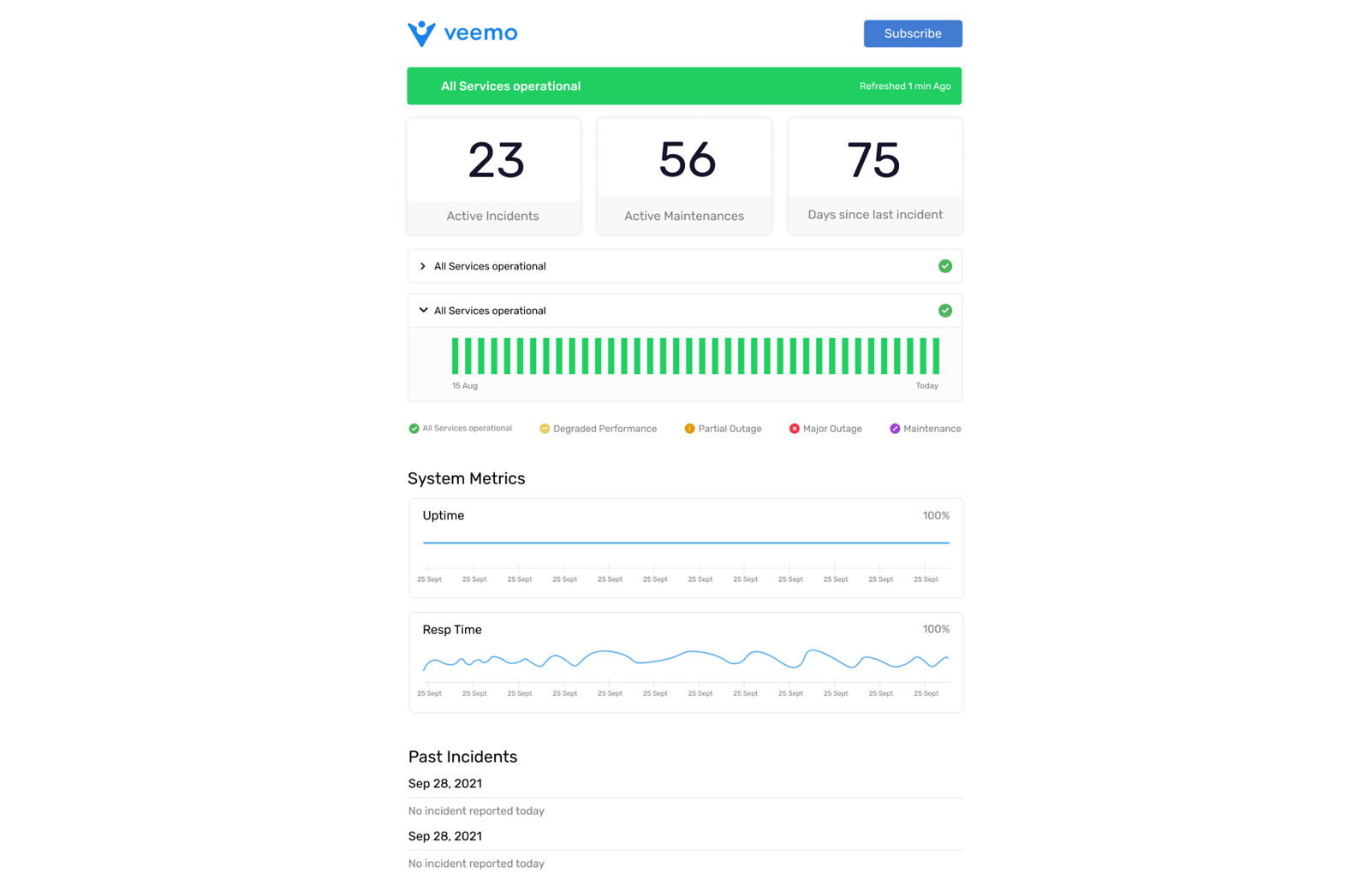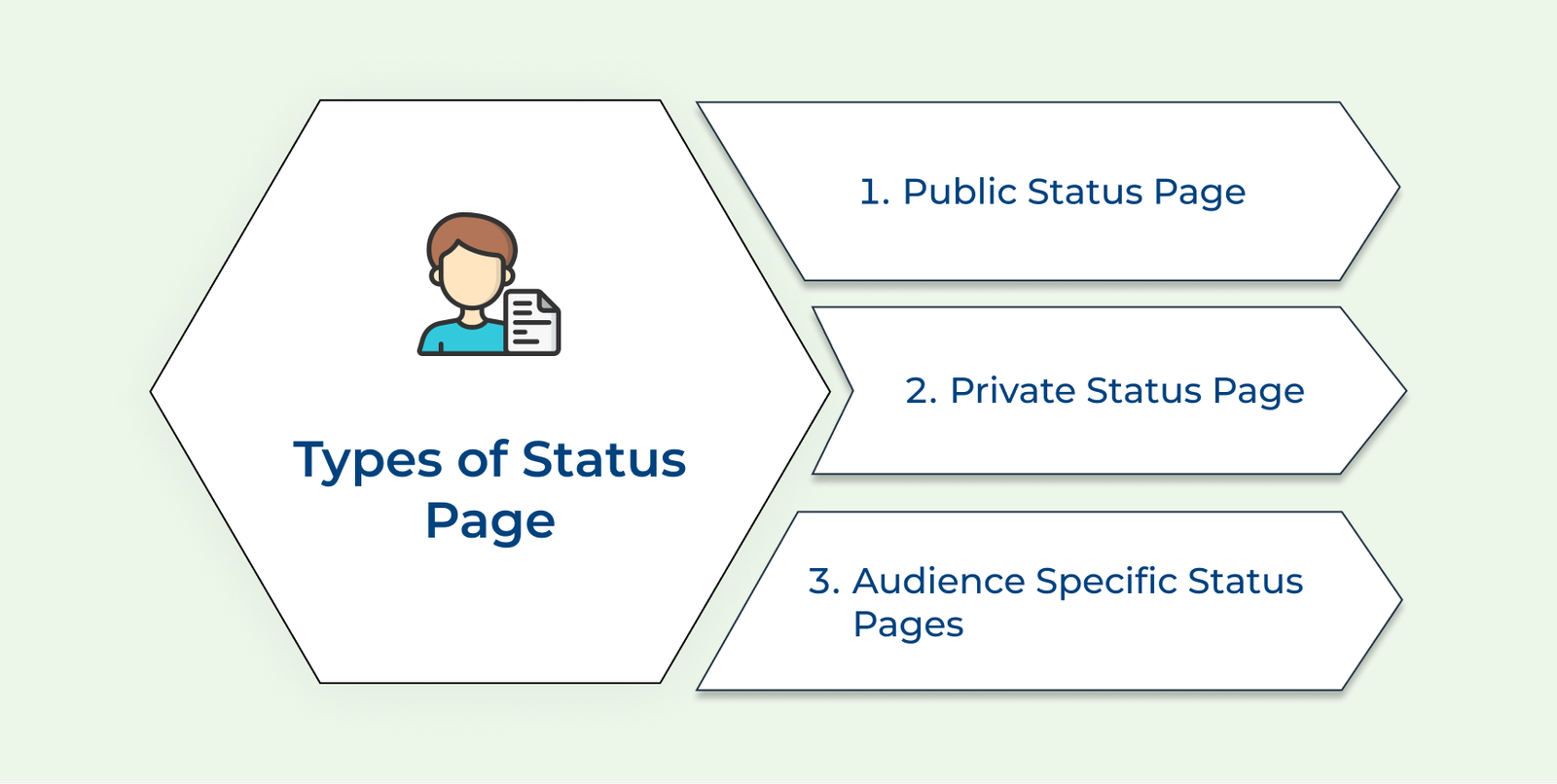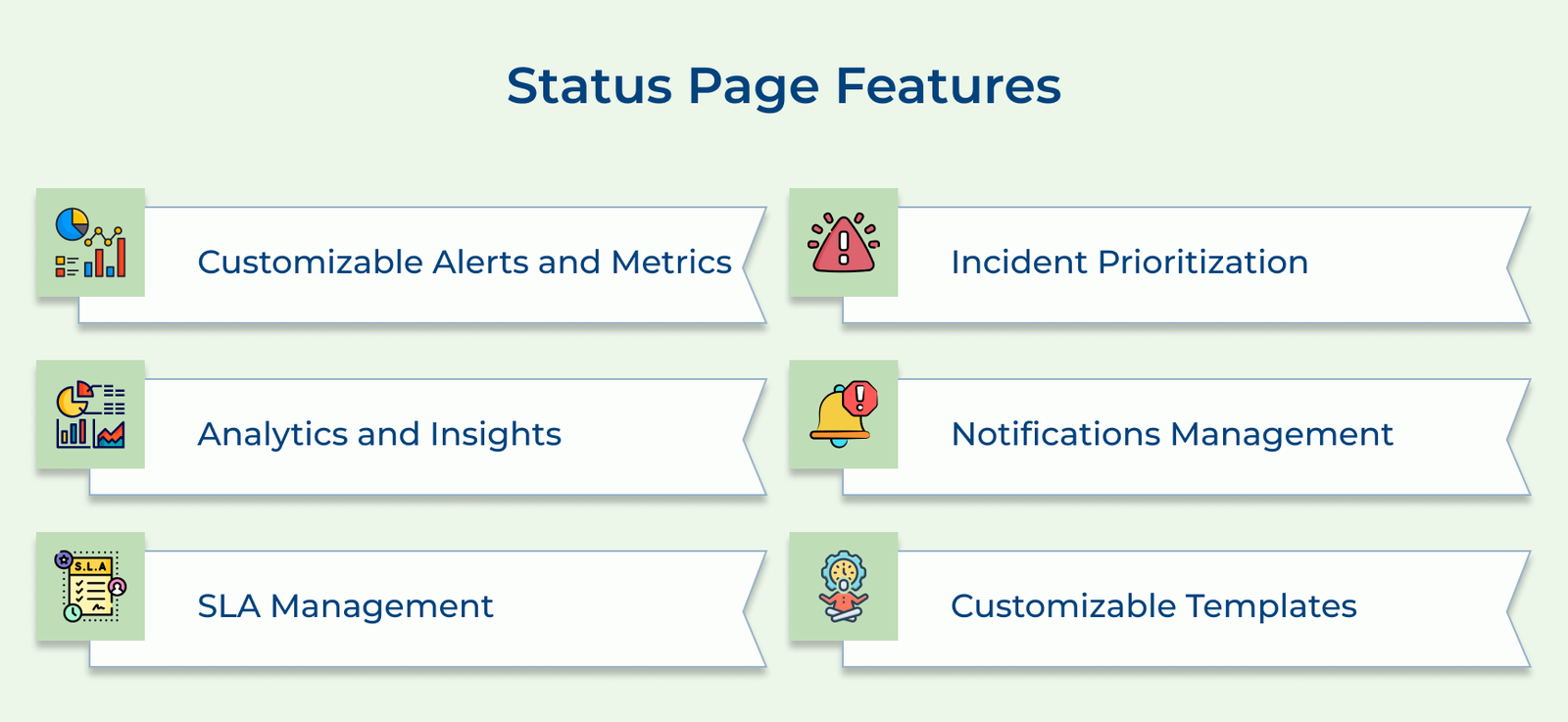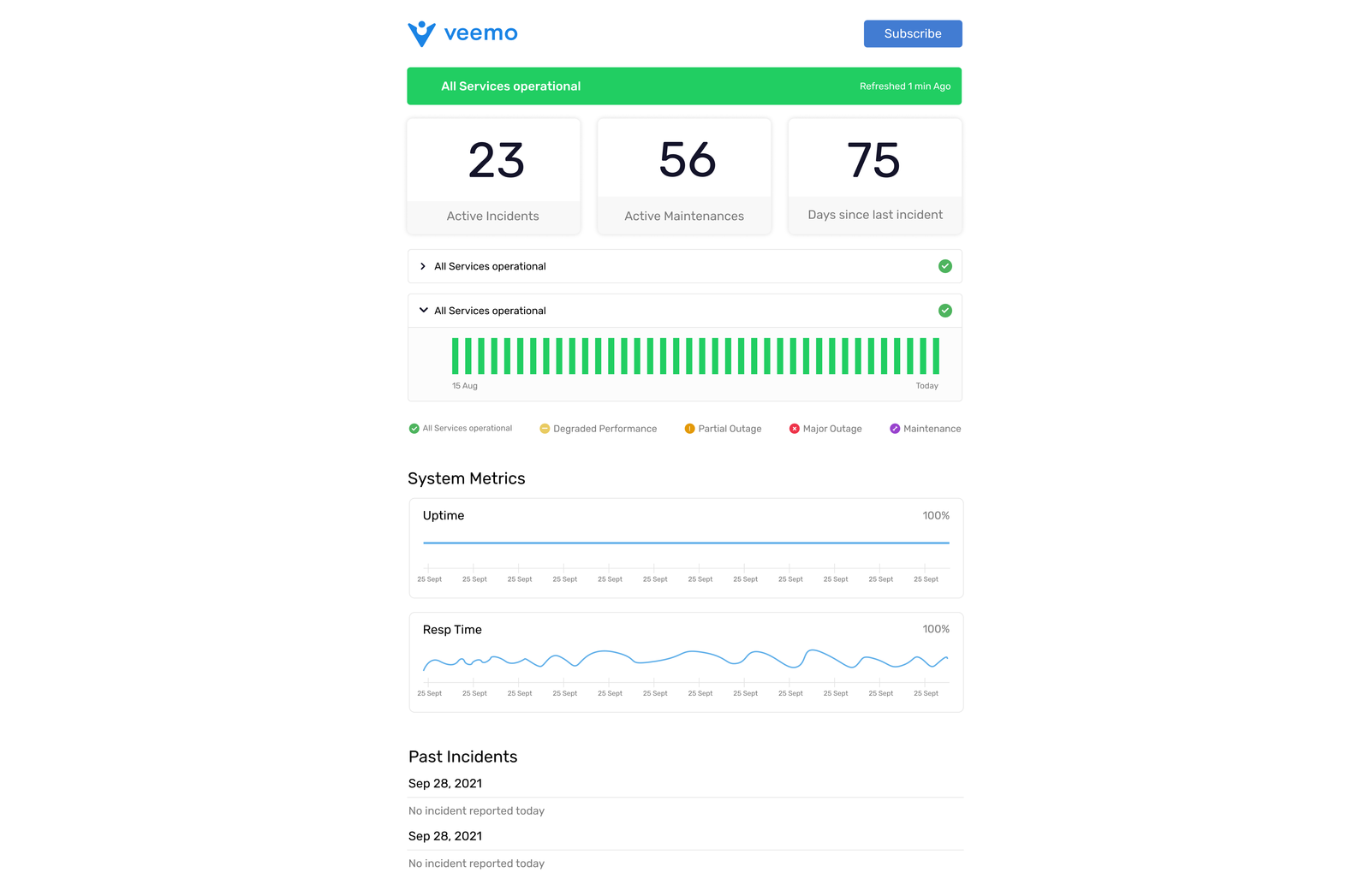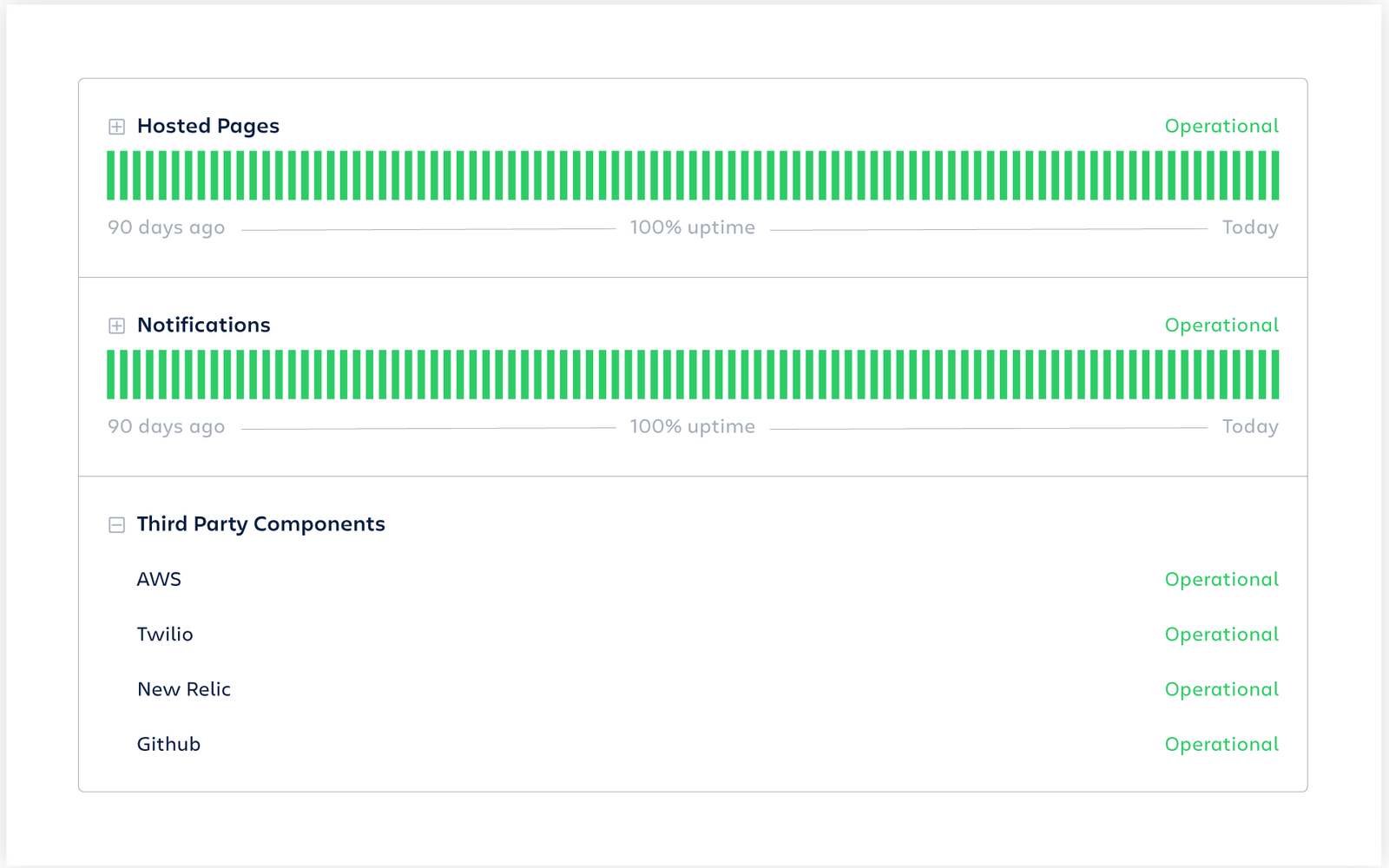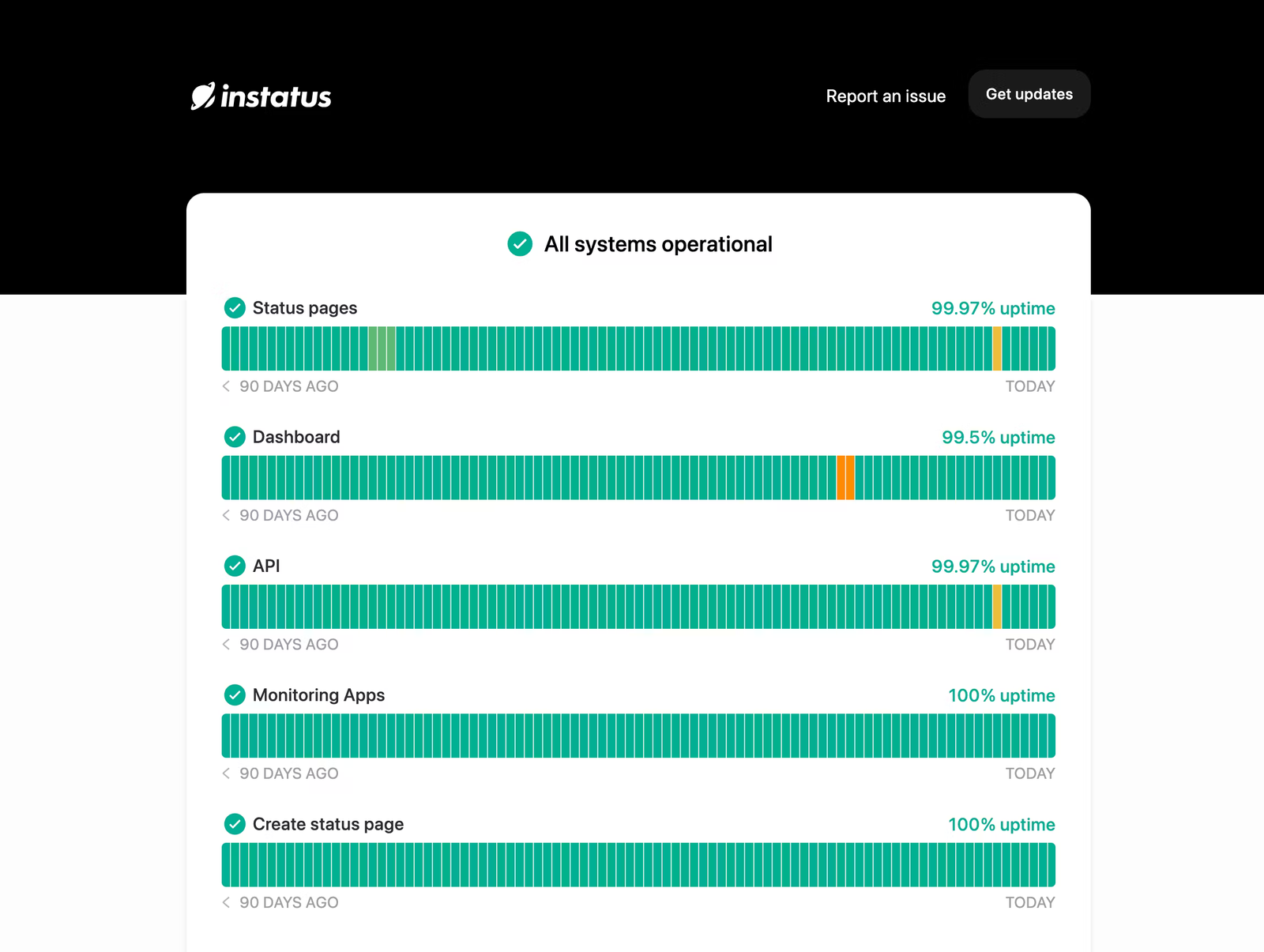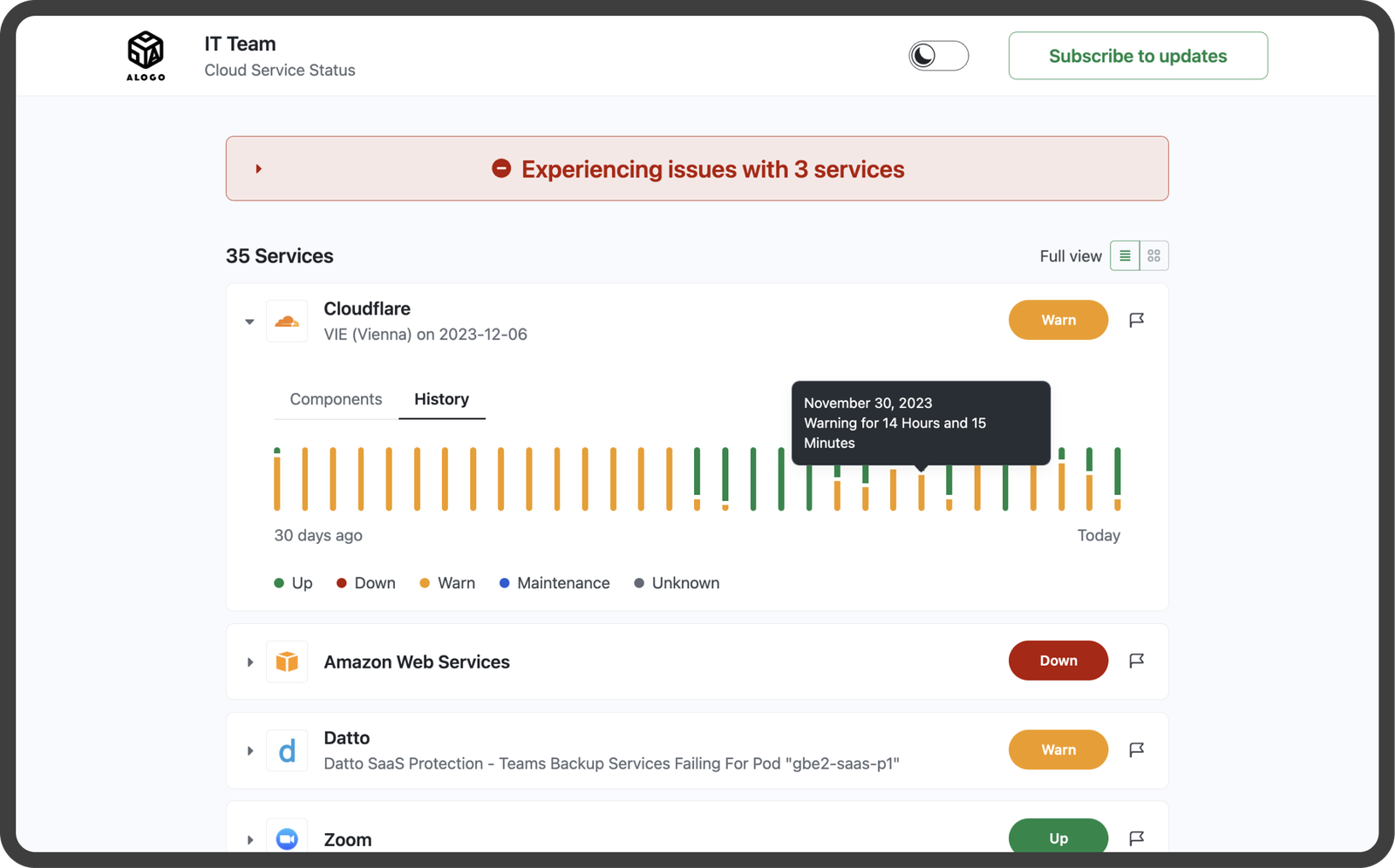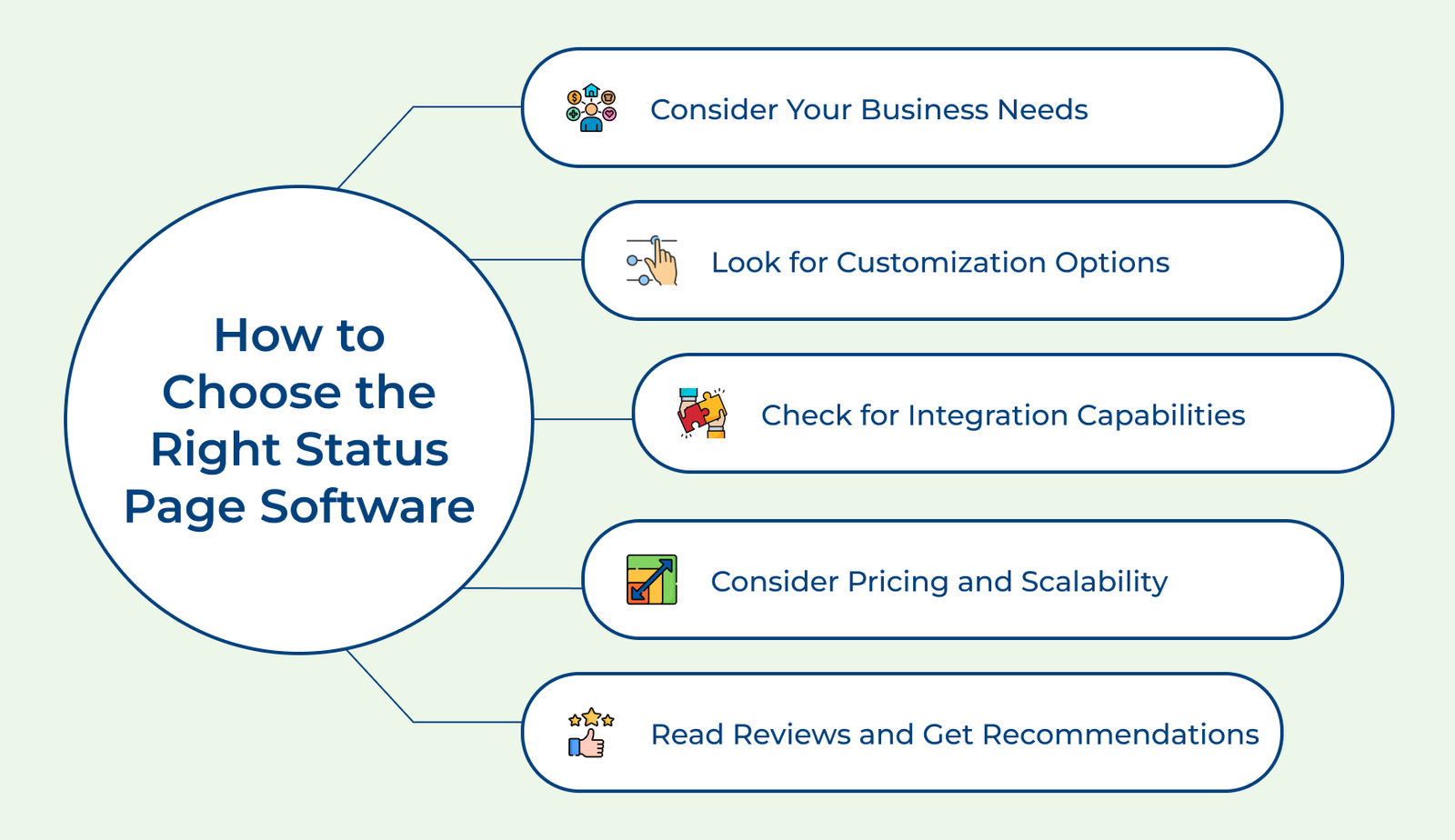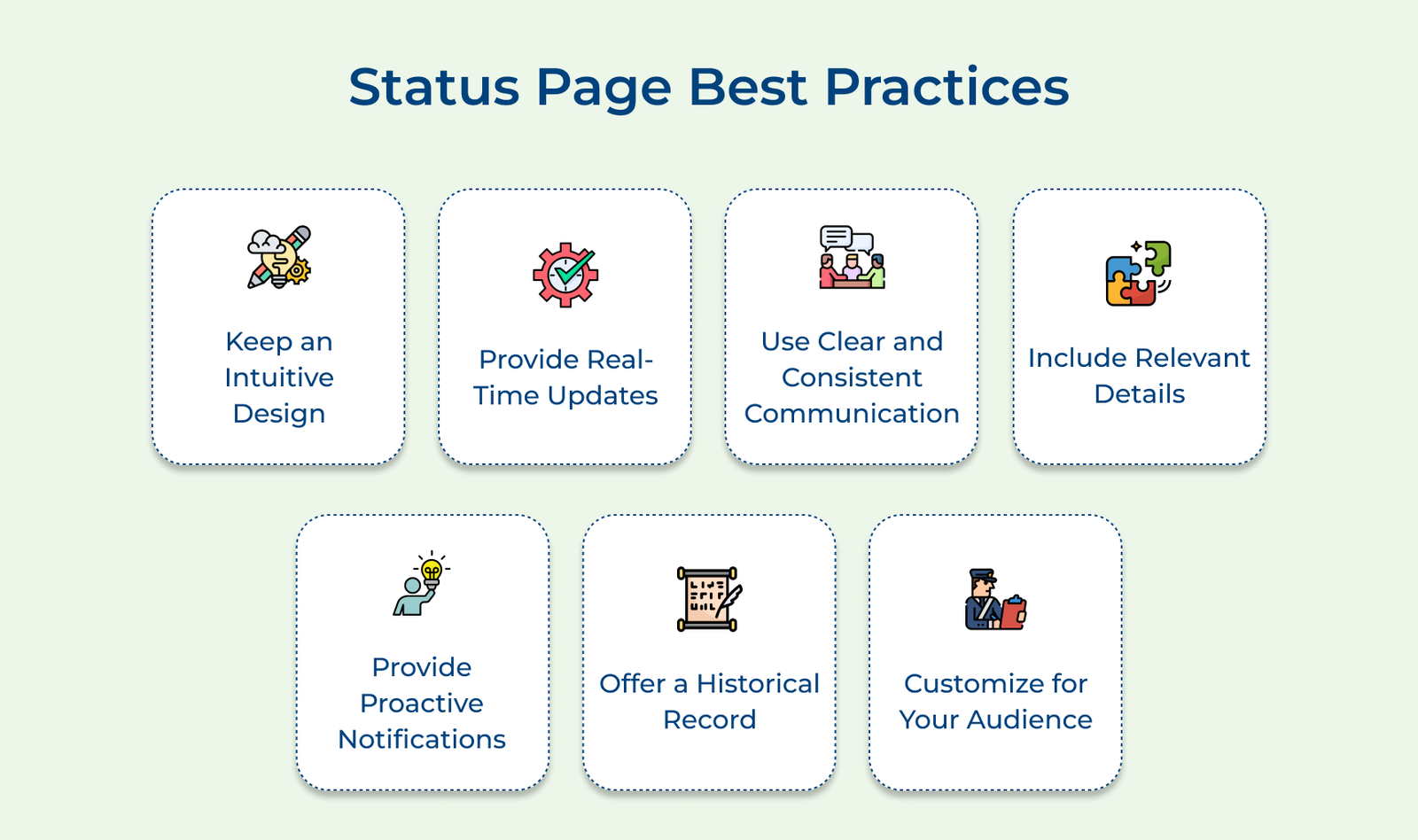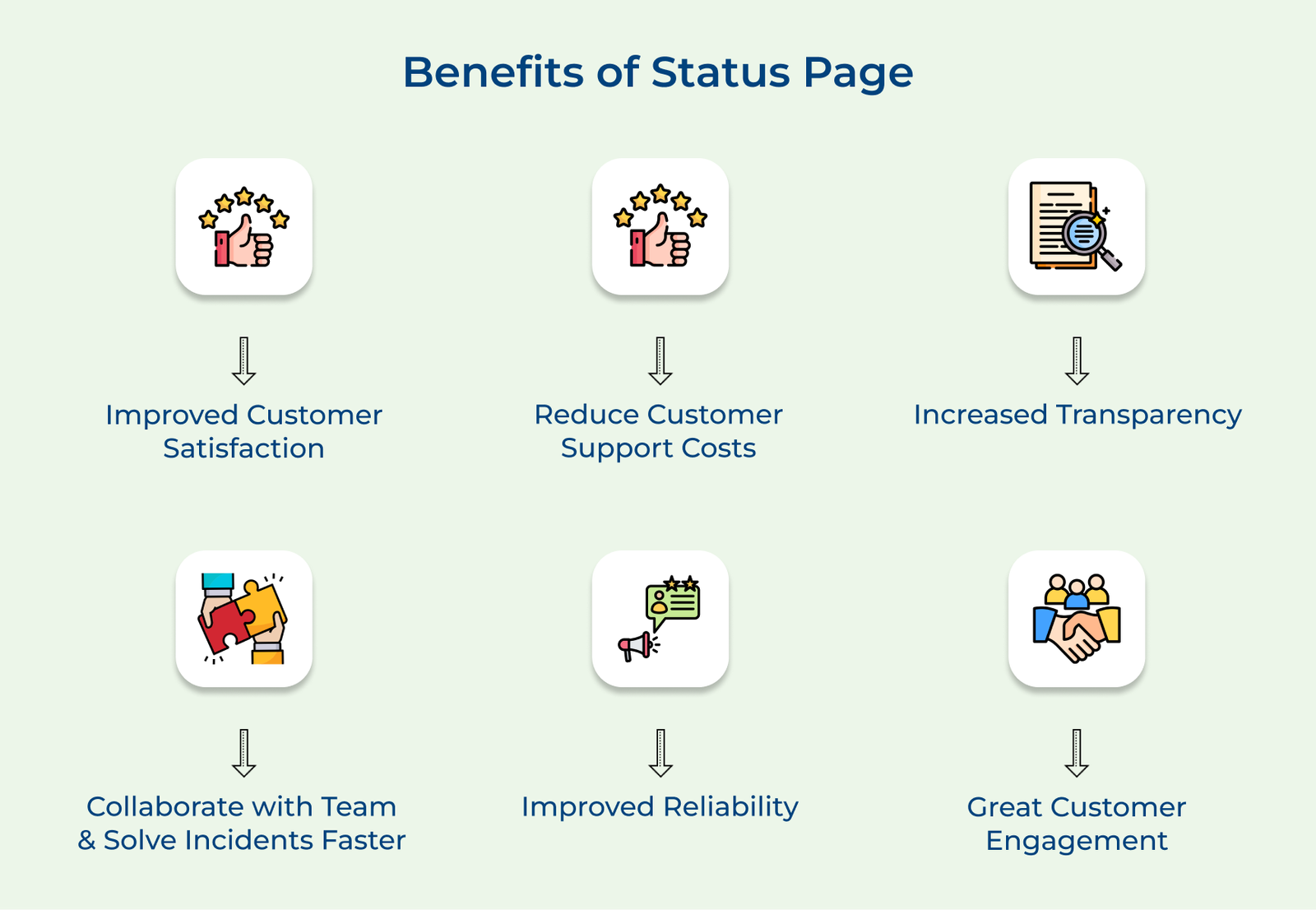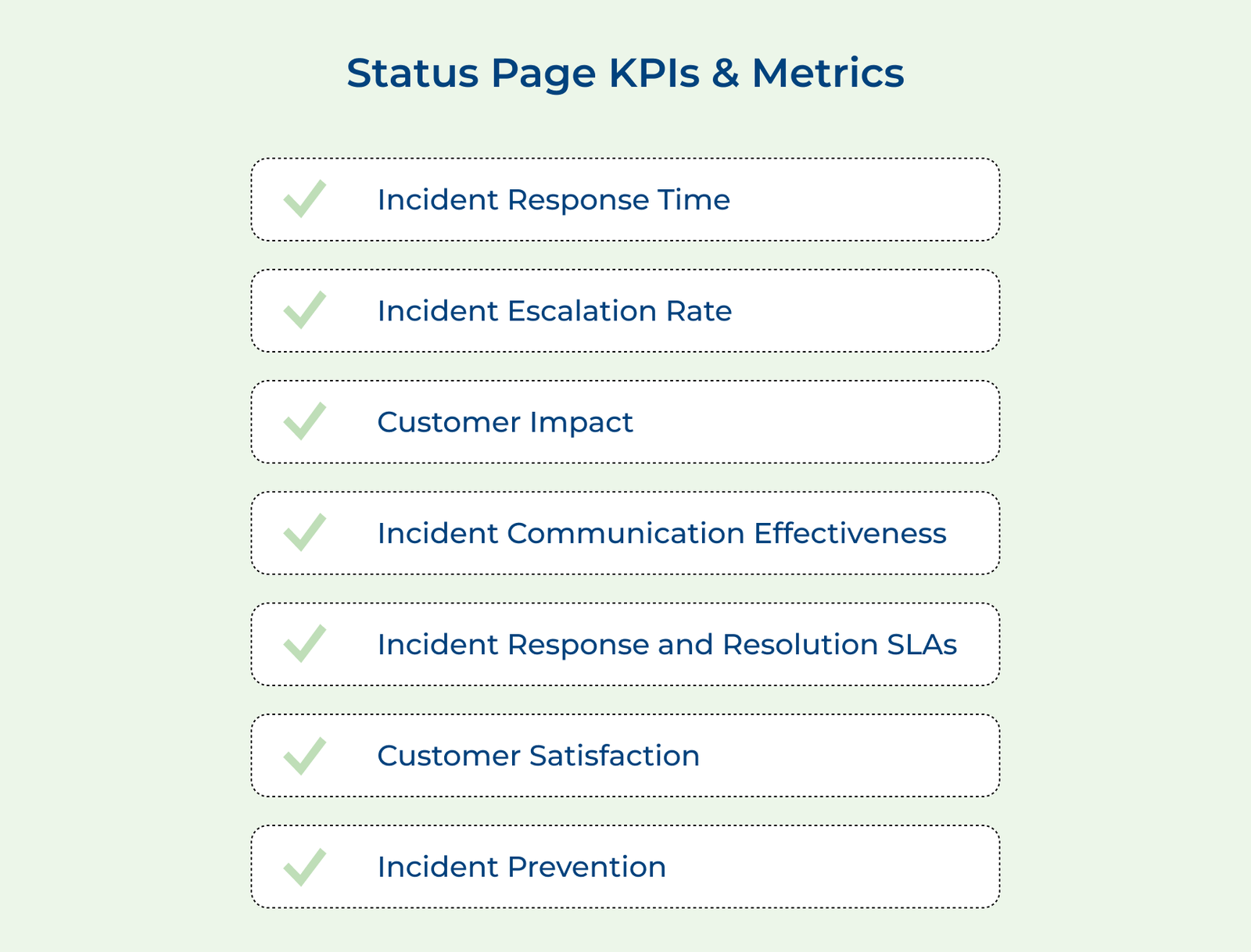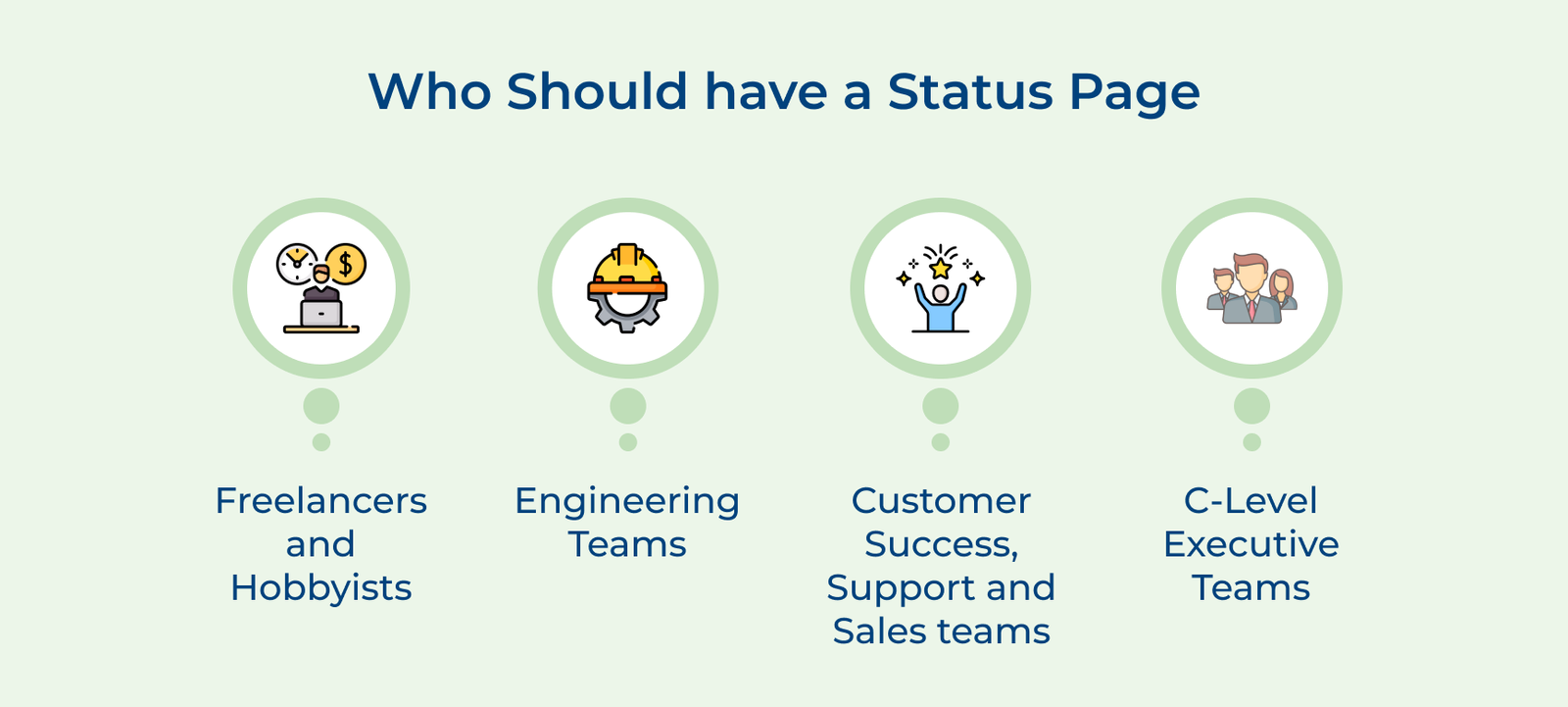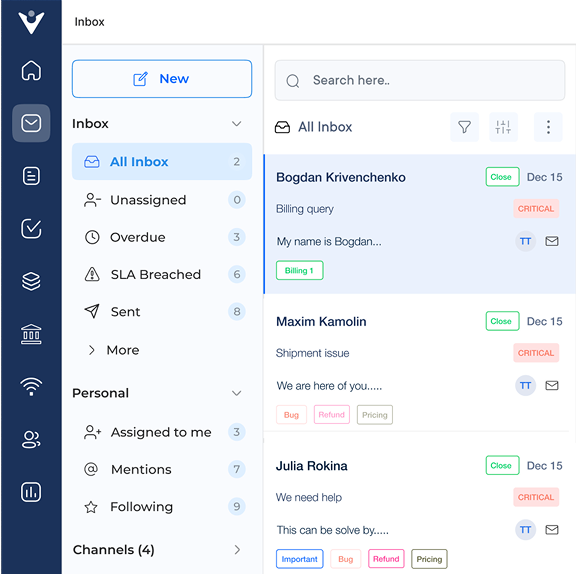1. Keep an Intuitive Design
When users visit a status page they are typically looking for quick and easily understandable updates on the status of the services they rely on. They want to know if there are any issues or incidents that may affect their experience. It is crucial to present the information in a straight forward easily digestible format.
How to implement:
- Conduct user testing to identify areas of confusion and iteratively simplify the design.
- Implement a consistent layout and design across all components of the website status page, ensuring a cohesive experience.
2. Provide Real-Time Updates
Providing real-time updates is crucial for an effective status page. It ensures that users have access to the most current information about system status. Implement real-time monitoring and alerting systems that can automatically detect issues as they occur.
Establish clear expectations for update frequency whether it’s every 15 minutes, hourly or based on specific event triggers. Consistent updates build trust and transparency with users.
How to implement:
- Leverage real-time monitoring tools and integrate them with the status page platform.
- Automate the update process as much as possible to minimize manual intervention and delays.
- Implement a robust communication plan to ensure that relevant stakeholders are notified promptly and can contribute to updates as needed.
3. Use Clear and Consistent Communication
Using clear and consistent communication is crucial. Avoid technical jargon or ambiguous language that might confuse or mislead users. Opt for straightforward language that conveys the message effectively.
Maintain a consistent tone throughout an internal status page to ensure a cohesive and professional experience. It helps build credibility with users and make sure to provide translations so that everyone can access and understand the information.
Pro tips:
- Develop a comprehensive style guide that outlines the preferred tone, language and formatting for all status page communications.
- Create pre-written templates for common scenarios or incident types. It ensures that the language remains consistent and clear even during high-pressure situations.
4. Include Relevant Details
When including relevant details on a website status page it’s crucial to describe the issue and its impact clearly. Provide specific information about what systems or services are affected, the severity of the disruption and how it impacts users. Offer estimated resolution times even if they are rough approximations.
Suggest workarounds or temporary solutions if possible to help users mitigate the impact until the issue is resolved. It not only demonstrates proactive support but also empowers users to continue their work or activities with minimal disruption.
Tips:
- Establish clear guidelines and templates for incident reporting, ensuring consistent information is provided.
- Implement a robust monitoring system to identify issues early and provide timely updates on their resolution progress.
5. Provide Proactive Notifications
Providing proactive notifications is a crucial best practice for an effective status page. It ensures that users are promptly informed about any incidents, outages or updates. It enables them to take necessary actions and minimize the impact on their operations.
Offering subscription options for status updates allows users to stay informed through their preferred communication channels. Integrating with email, SMS or messaging platforms ensures that notifications reach users promptly. Customizing notification preferences empowers users to tailor the frequency, severity level and type of updates they receive.
Tips:
- Invest in a reliable and scalable notification infrastructure that can handle large volumes of notifications without delays or failures.
- Allow users to customize their notification preferences such as choosing specific services, severity levels or update types to avoid notification fatigue.
6. Offer a Historical Record
Maintaining an archive of past incidents on the status page is crucial for transparency and continuous improvement. Including resolution details can help businesses provide users with valuable insights and demonstrate their commitment to addressing issues. The historical data allows users to reference previous occurrences and track their reliability.
How to implement:
- Automate the archiving process to ensure consistent and comprehensive record-keeping.
- Present the information in a user-friendly format, making it easy for users to navigate and find specific incidents.
7. Customize Your Audience
Customizing the status page is crucial for providing a tailored experience to the users and stakeholders. Tailor the page to align with the organization’s specific needs, services and communication goals.
Incorporate branding elements like logos, colour schemes and visual elements to reinforce the brand identity. Offer customization options for different user groups such as customers, employees or partners.
How to implement:
- Define clear objectives and user personas to guide the customization process.
- Leverage templates to streamline the customization process while maintaining consistency and accessibility standards.




